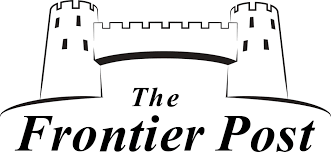LONDON (DPA): Scientists believe ancient Egyptians tried to understand and treat cancer more than 4,000 years ago.
Researchers have found evidence of cutmarks on a skull around a large lesion thought to have been caused by a cancerous growth.
They also found 30 smaller lesions across the skull, suggesting the cancer was spreading.
The skull belonged to a man who was around 30 to 35 when he died, the researchers said.
They said the cutmarks are likely made with a sharp object, suggesting these ancient Egyptians may have tried to operate on the tumor.
Tatiana Tondini, a researcher at the University of Tubingen in Germany, said: “When we first observed the cutmarks under the microscope, we could not believe what was in front of us.”
But Edgard Camaros, a palaeopathologist at the University of Santiago de Compostela in Spain, said the surgical cutmarks might be from a medical autopsy to learn more about the disease after death.
He said: “Both possibilities reveal a surgical intervention intimately related to the tumors – which is amazing.”
“This finding is unique evidence of how ancient Egyptian medicine would have tried to deal with or explore cancer more than 4,000 years ago.
“This is an extraordinary new perspective in our understanding of the history of medicine.”
The team said its research, published in Frontiers in Medicine, suggests that although cancer is often seen as a human-made illness caused by environmental factors such as pollution and diet, the disease also affected ancient civilizations.
Camaros, the lead author of the study, said: “It is true that cancer is perceived as a modern disease, mostly related to Western habits and about environmental carcinogens.
“However, cancer has been with us since the very beginning in many ways. Even dinosaurs suffered from cancer.”
Ancient Egyptians were known to be highly skilled at medicine and had advanced knowledge of anatomy and surgery.
Evidence suggests they could identify, describe and treat wounds, diseases and fractures and put in dental fillings.
But cancer was still a medical knowledge frontier, the researchers said.
They also analyzed another skull, which was more than 2,000 years old and belonged to a woman who may have been older than 50.
This revealed a big lesion consistent with a cancerous tumor that destroyed the bone, according to the team.
Camaros said: “We know it was cancer based on the characteristics of the lesions on those bones, which mainly are related to bone creation and destruction.
“When analyzing the bone structures with a micro-CT scan internally, we found very clear cancerous features.”
Both skulls come from the University of Cambridge’s Duckworth Collection, which houses one of the largest collections of human remains in the U.K.
The researchers said the female skull also revealed two healed lesions thought to be from traumatic injuries caused by a sharp instrument.
They said this is uncommon as most violence-related injuries are found in males.
Camaros said that the findings are “encouraging,” but “more studies will be needed to untangle how ancient societies dealt with cancer.”
He said as part of the next steps, the team is trying to understand more about how cancer evolved as a disease.
Camaros said: “Our aim is to complete the biography of cancer from the very beginning of human history.”







